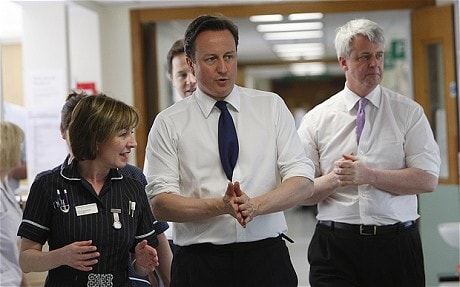Billion pound bailout for PFI hospitals staring down the barrel
 Seven NHS trusts are on the brink of bankruptcy due to their “sky-high” PFI commitments. The Department of Health has been forced to set up a bailout fund of £1.5 billion to ensure their survival.
Seven NHS trusts are on the brink of bankruptcy due to their “sky-high” PFI commitments. The Department of Health has been forced to set up a bailout fund of £1.5 billion to ensure their survival.
Controversially it emerged that this will not be the first time PFI hospitals have received extra financial support. Health Secretary Andrew Lansley said:
“In the past, local trusts have received extra funding on the quiet in order to avoid embarrassment.”
So, NHS trusts facing cuts cannot keep up repayments on PFI hospitals – hardly surprising. Globalise Resistance wrote about last it year, here. And researchers have been warning government for years.
Seven trusts in total have applied for a share of the £1.5 billion that will help to keep their PFI creditors at bay. However each trust must a set of criteria laid out by the DoH to qualify which includes delivering “high levels of annual productivity savings” i.e. making cuts.
PFI projects are ring fenced from “productivity savings”, or cuts, and indexed to inflation.
How can you implement cuts to a hospital when the contract forbids you? How can you deliver savings when the annual costs of maintaining the same service is rising with at over 4% per year?
You can’t.
So you have to make deeper cuts elsewhere. For example when facing a 20% cut across two hospitals and one of them is PFI, you’ll have to let PFI carry on business as usual and cut the other hospital budget by 40%. But because of inflation, your PFI hospital bill is growing by over 4% a year at the moment. So you’ll have to cut hospital 2 but 44%.
It’s impossible to cut a hospital budget by 44% and carry on as normal. So you need to either close the hospital in its current form, or apply for a bailout. This time, the seven NHS trusts were lucky, the DoH had the cash to stump up. But what about the next seven? And the hundreds of other PFI hospitals?
PFI hospitals are fundamentally unsustainable. Remember, on average, a PFI project costs the taxpayer four times its capital value. A hospital valued at a £100m will cost you £400m. Where does this £300m go?
To banks, who charge corporations much higher interest rates than they do government. To construction companies who write huge profit margins into contracts. To crooked maintenance contractors that charge hundreds of pounds to change a light bulb. To lawyers, management consultants, PFI equity traders and the other public sector leeches.
So, when the next bunch of NHS trusts can’t keep up their PFI repayments what will the DoH do?
a) Renegotiate the terms of the contract with the corporate mercenaries?
b) Set up a bailout fund and load more debt on to the public sector?
c) Allow the trust to close front-line services
Answers on a postcard please.







